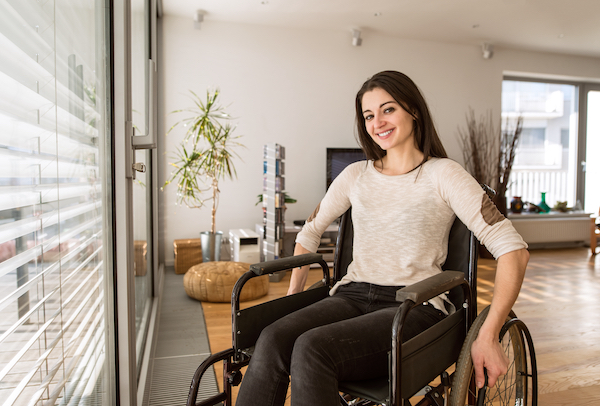
When you have to make your home wheelchair-friendly or wheelchair-accessible, you might have a lot of things going through your mind. It could feel overwhelming, and you don't want to forget a single thing. Millions of Americans are doing the same thing right now, so the list of things you need to do is standardized. The American Disabilities Association (ADA) has guidelines for all the changes you will need to make. Start with this list of ideas to make your home wheelchair-friendly.
Add a Ramp
Approximately two million Americans begin using wheelchairs every year, and for each of them, how to get into the house is often the first thing on their mind. One of the first things you will want to do is install a ramp for your entrance. The standard width for wheelchair ramps is 36' to 48', and the length can be as long as you need it to be. This is the most common way to modify an entrance for wheelchair-accessibility.
The two most common kinds of ramps are free-standing and threshold ramps. Free-standing ramps are effective when you need to get past stairs, while threshold ramps are useful when you need to get past barriers. Guidelines for threshold ramps are that their edge must exceed 0.25".
Install Railings In the Bathrooms
Retrofitting the bathroom is a standard part of making a home more wheelchair-friendly. There are a number of things you can do in a bathroom to make it easier to use from a wheelchair, and railings are the first thing you'll want to invest in. Grab bars in the toilet area are a good start, and the shower and bath should get rails as well.
Bars at standing and sitting level in the bathtub will be needed. Angled bars that can accommodate both standing and sitting are also helpful, and minimize the railings that you need to buy.
You'll also need to make a few changes to the toilet area that go beyond railings. The toilet will need to be raised to meet the height of the seat on the wheelchair. There are a number of different ways you can retrofit this from brand-new toilets to elevated seats.
Ensure a Wheelchair Can Fit in Your Doorways and Hallways
The minimum guideline width for doorways to be wheelchair-friendly is 36', but ideally, they should be 48'. In commercial buildings, they are required to be 48'. A standard 36' doorway may be enough, but if the wheelchair needs to turn, that could be a problem.
You also need to check flooring around the doorways. If you have area rugs or mats through the doorways, you may want to move them so that a wheelchair does not get caught on them.
Install Hardwood, Slip-Free Flooring
The flooring industry in the United States recently saw growth in its volume by 3.2% and 3.85% in dollars. If you've spent a Saturday or two watching home improvement shows, then you know that flooring trends can be both fascinating and affordable. For wheelchair-friendly flooring, you want something that is non-slip.
The most common non-slip flooring is laminate flooring, ceramic tile, vinyl, and carpeting. You can change one room at a time, or consider getting your entire floor changed to one kind to ensure that movement from one room to the next is universal.
Remodel for a First-Floor Bedroom and Bathroom
It may be worthwhile considering a remodel where you move all needed elements for living to the main floor in a home. In most homes, the bath and bed are upstairs or on opposite floors. If you can see if you can move everything onto one floor, the main floor is preferred.
You could move living up to a second floor by adding a lift to the stairs, but the main floor remodels for wheelchair-friendly changes are often the easiest. This is even easier if you have a bathroom on the main floor.
Consider Motion Detectors
Approximately 59% of homebuyers under age 29 don't expect to be in their current home in 10 years, but older Americans have different mindsets. They don't want to move if they don't have to.
If you think you are going to be in this home for a while, consider adding more security or smart features to the home, such as motion detectors. Motion detectors can be used for something as simple as lighting. Some are very affordable and can be just plugged into the wall to turn a light on when you are going through a dark hallway or can't reach a light. Other smart features you may want to consider are smart thermostats or additional security features around the home for safety.
When it comes time to remodel to make your home more wheelchair-accessible, use this list as a starting guide. The changes don't have to be overwhelming. Start with one item at a time, and the task will feel easier as you go along.


























